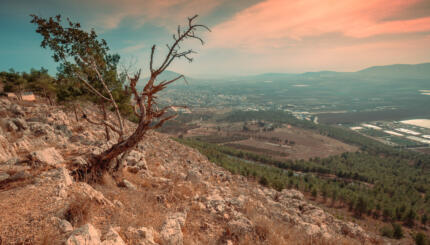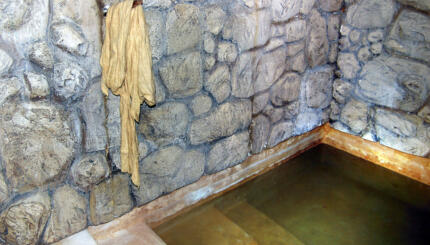Reprinted with permission from Maimonides’ Introduction to His Commentary on the Mishnah, translated and annotated by Fred Rosner, and published by Jason Aronson.
Following [Seder Nashim (women)], he subdivided the subject matter in Seder Nezikin (damages) and separated the first tractate thereof into three parts. He began with Bava Kamma (the first gate), which deals with various agents of injury and how to avoid them, such as an ox, a ditch, consumption, the laws of assault, and their like. A judge is obligated to first litigate the removal of sources of injury from among people.
Next follows Bava Metzia (the middle gate), which deals with claims, deposits, hirings, the laws of borrowers and hired laborers, and everything else that is appropriately connected with this topic. This is similar to the sequence in Scripture, namely, after the laws of ox (Exodus 21:38), ditch (21:33), consumption (22:4-5), and if men fight together (21:22), it speaks about the four types of watchmen (22:6-14). Then comes tractate Bava Batra (the last gate), and its subject matter deals with laws about divisions of property, laws pertaining to dwellings held in partnership, and laws concerning neighbors, and annulment of a sale or transaction due to the discovery of a physical defect therein. It further speaks of the sale and acquisition of property, how to adjudicate these cases, and the laws of bonds and inheritance. This section is described last, because it consists entirely of tradition and legal arguments, none of it being explicit in the Torah.
Having enlightened us concerning the civil laws, he then speaks about the judges who implement these laws and, therefore, placed tractate Sanhedrin (court) after Bava Batra. However, tractate Makkot (flogging) is attached to tractate Sanhedrin in many ancient texts and is counted as part of it because he speaks of “These are strangled” and then continues with “These are flogged.” This is not a valid reason, however, because it is a separate tractate. It is placed next to Sanhedrin because it is not permissible for anyone save the judges themselves to administer floggings and punishments as it is written in Scripture: “The judge shall cause him to lie down and to be beaten before him according to his wickedness” (Deuteronomy 25:2).
After Makkot he placed tractate Shevu’ot (oaths), because the conclusion of the former tractate and the beginning of this latter tractate deal with similar laws and judgments, as is mentioned in the Talmud. Furthermore, it also pertains to the actions of judges in that only a judge can impose an oath.
With your help, My Jewish Learning can provide endless opportunities for learning, connection and discovery.
Having completed the discussion of civil laws and judges and all that pertains to judges’ actions exclusively in the matter of corporal punishment, and the imposition of oaths, he then describes the subject of Eduyot (testimonies). Most of the topics in this tractate are the enumeration of all the legal testimonies rendered by trustworthy individuals whose decisions are final rulings. This fact is fundamental for the establishment of laws because testimonies are only to be pronounced before a court. Similarly, all testimony from these people is only pronounced before a court. It is placed after tractate Shevu’ot because Shevu’ot deals with matters regularly needed throughout the generations, whereas Eduyot are testimonies pronounced before judges at specific times in the past and which were accepted.
Following this he speaks of matters relating to Avodah Zarah (idol worship) because its content deals with topics that a judge must know in order to be completely qualified by being familiar with the customs of such idol worship and all that pertains thereto. He will thus know how to pass judgment regarding them. Thus if one worships Saturn in the manner one worships Venus or if one prays to Jupiter with the prayer usually reserved for Mars, one is not liable to execution, in accordance with the clear tradition. He placed this tractate last because an instance of idol worship happens only very rarely and is an exceptional occurrence.
Having completed the discussion of items necessary for judges, he then began with Avot (sayings of the fathers) and did this for two reasons: first, to tell us the truth and the correctness of the oral tradition that was handed down from generation to generation. Therefore, it is proper to revere a most learned Sage and to place him in an honorable position because he bears the tradition. He is to his generation what these earlier Sages were to their generation.….
The second reason [why tractate Avot follows tractates dealing with laws of judges and judgments] is that he wished to inform us in this tractate the ethical teachings of each of the Sages, may they rest in peace, so that we may learn good traits from them. No one is in greater need of this than judges for if ordinary people would not learn good character, no harm is done to the multitudes, only to those people themselves. However, if a judge is not ethical and modest, he would hurt both himself as well as others with his errors. ….
Having thus seen that a judge requires moral teachings in order to conduct himself ethically thereby, it was, therefore, fitting to place tractate Avot after Sanhedrin and those that accompany it because it contains all these ethical principles. To these are added other ethical teachings that lead one to abstention from worldly things, reverence for the Torah and those who study it, the doing of righteousness, and fear of heaven.
Following the presentation of moral principles to judges, he then discusses judicial error, as it is impossible for any human being not to err and transgress. He, therefore, placed tractate Horayot ([incorrect] instructions) after Avot, and with it completed Seder Nezikin. Thus, he completed the subdivision of the topics in Seder Nezikin into eight tractates.
Avot
Pronounced: ah-VOTE, Origin: Hebrew, fathers or parents, usually refering to the biblical Patriarchs.
Torah
Pronunced: TORE-uh, Origin: Hebrew, the Five Books of Moses.


